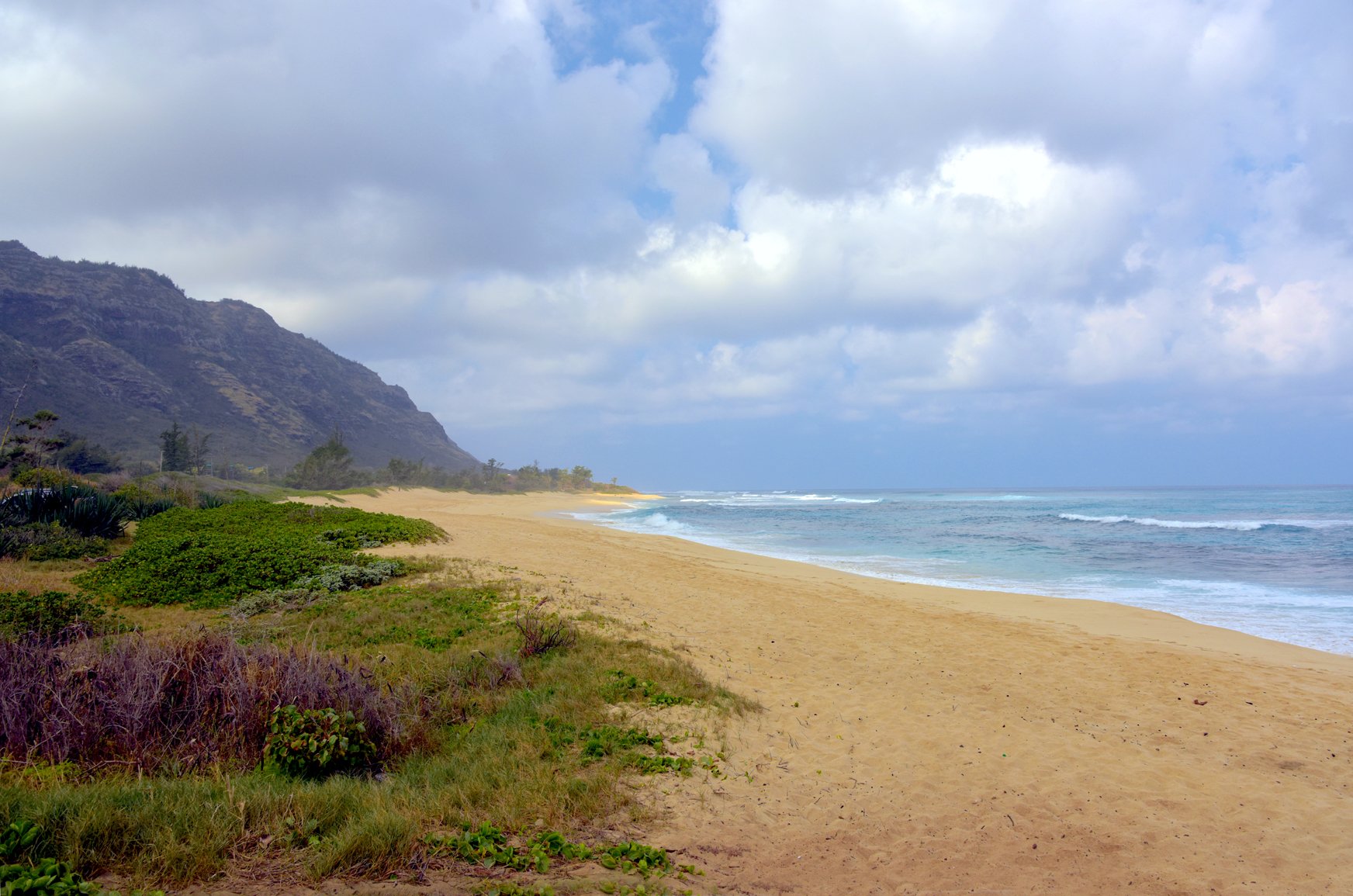
On a beautiful Saturday morning, I decided to go on a photography adventure to Kaʻena Point, the westernmost tip of land on the island of Oʻahu.
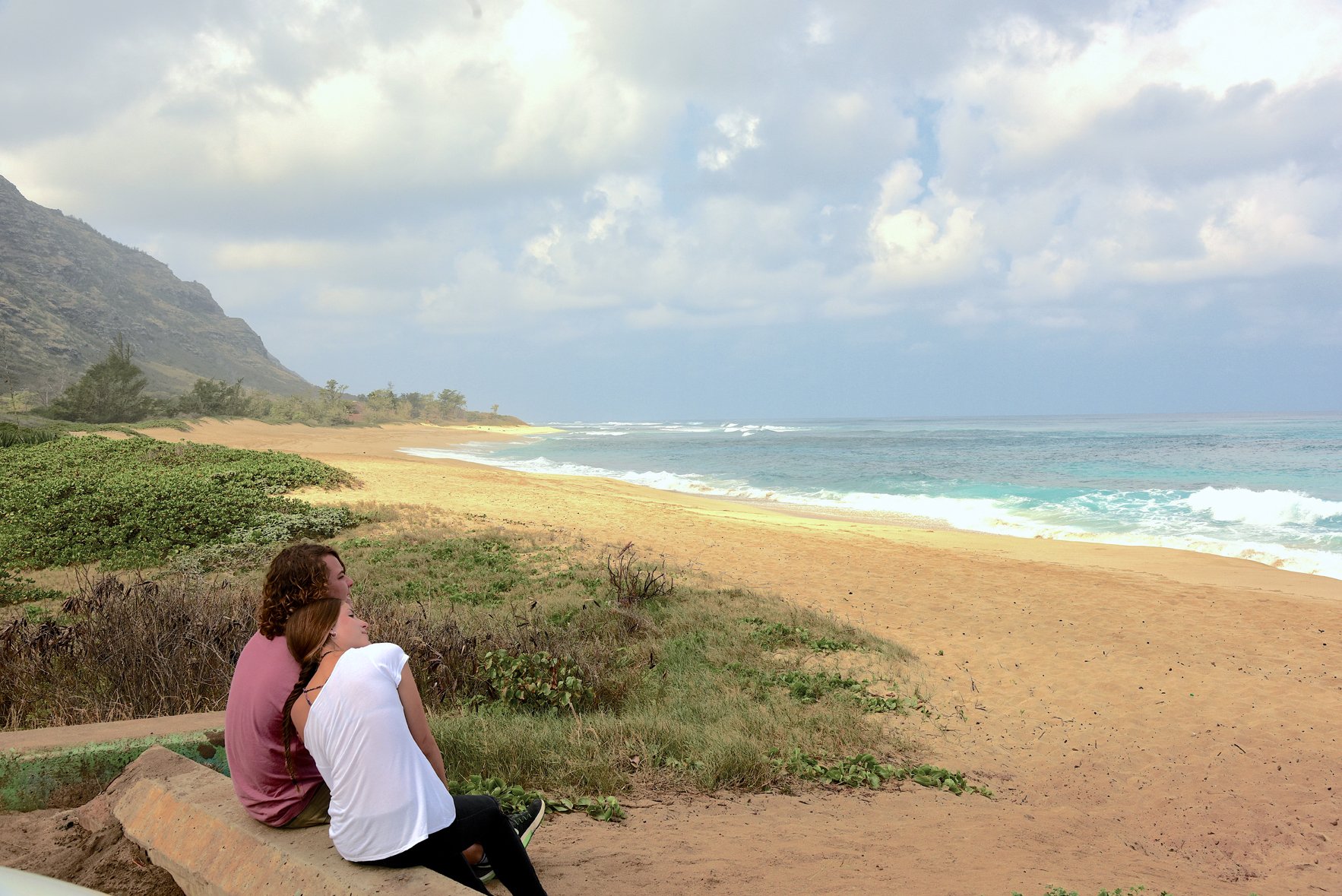
After parking I began the 2.5 mile (one-way) hike to Ka’ena Point Nature Reserve. Initially, I passed this group of young people from Argentina. They were awe stricken by the beauty of the views.
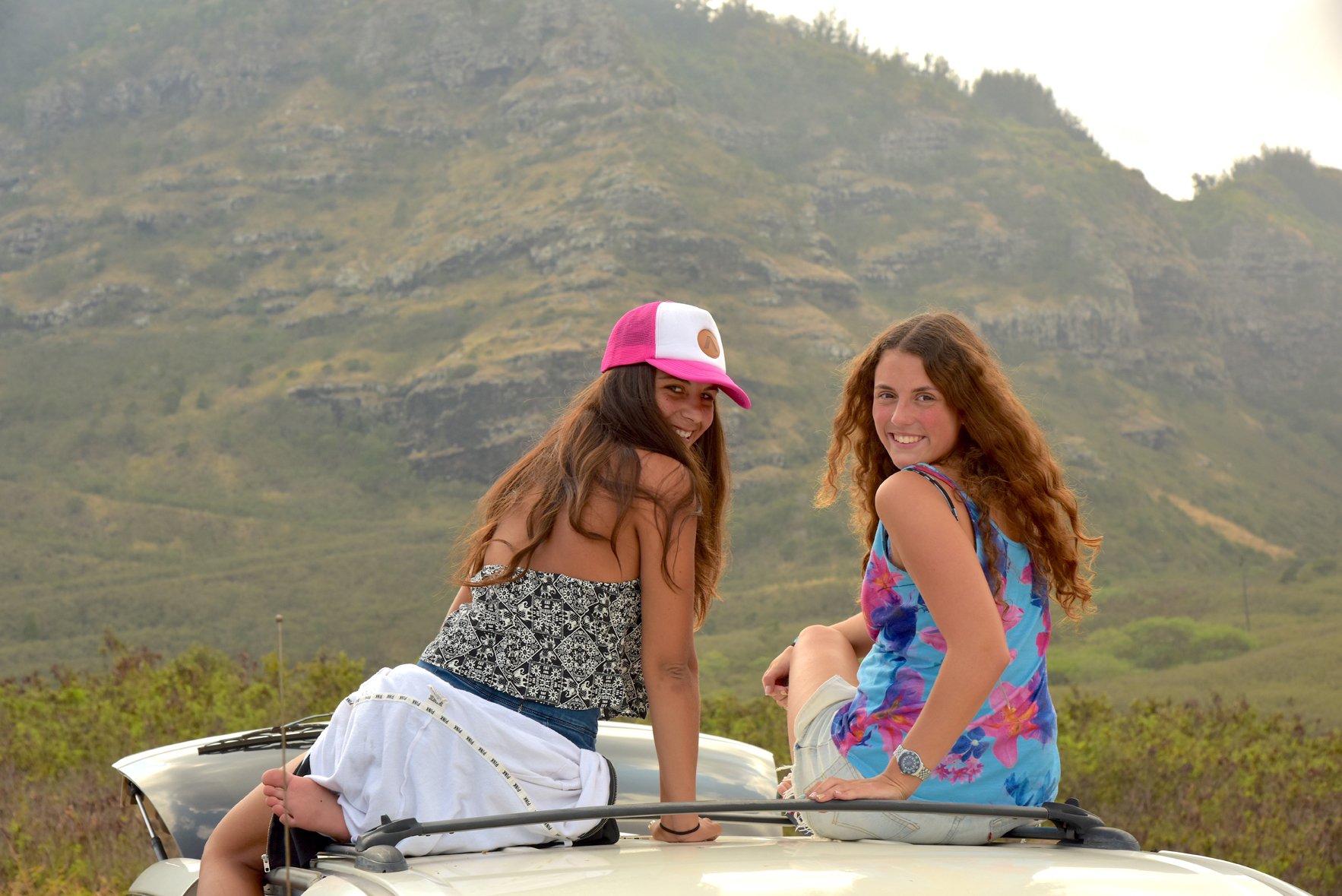
Two of the Argentinians were sitting on the roof of their enjoying the view. As we spoke and I told them my name, the woman on the right explained that she had a grandmother who was originally from Italy. They power of the waves had them mesmerized.
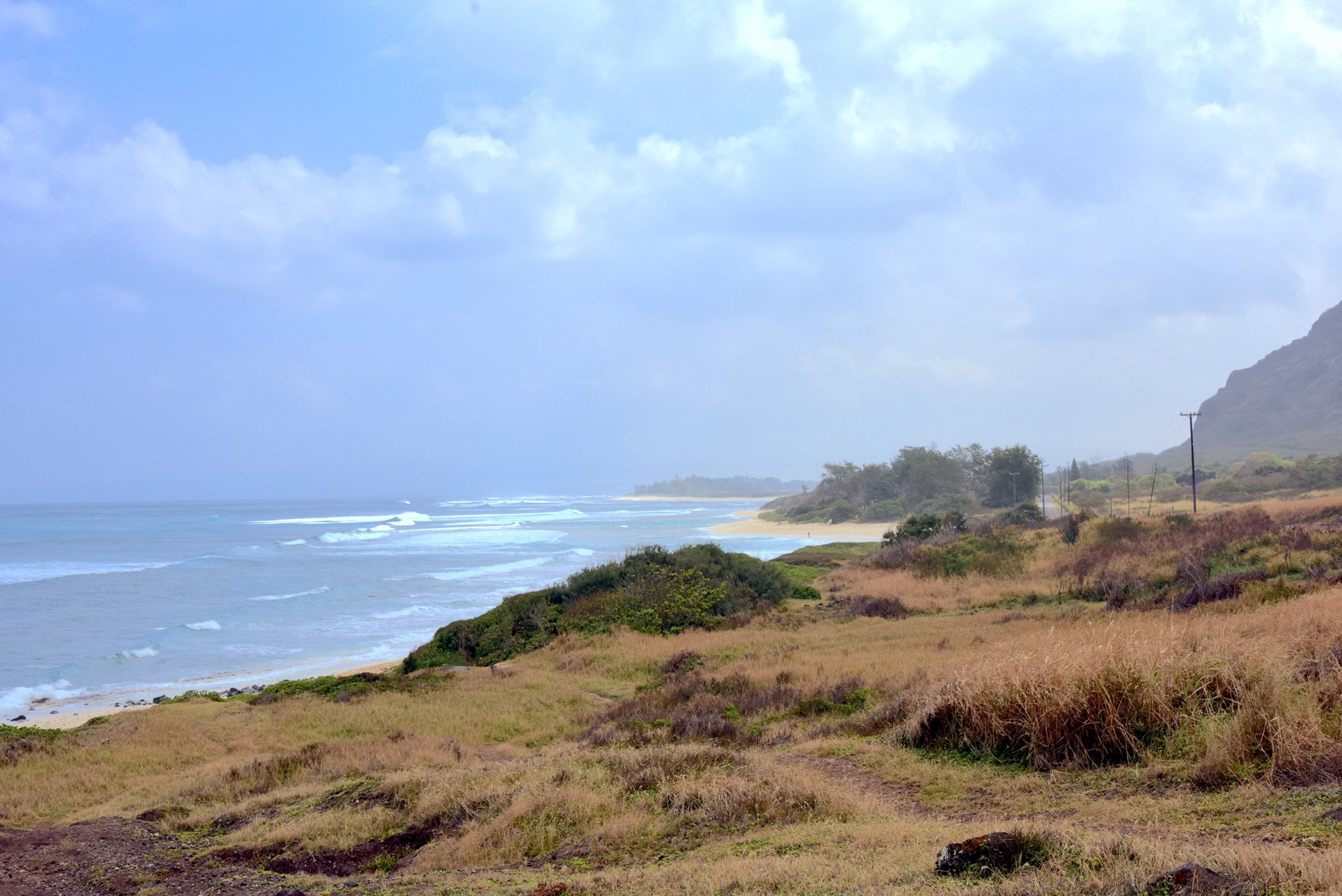
In Hawaiian, kaʻena means 'the heat'. The State of Hawaiʻi has designated the point as a Natural Area Reserve to protect nesting Laysan Albatrosses and wedge-tailed Shearwaters, Hawaiian monk seals (Monachus schauislandi), and the fragile (to vehicular traffic) native strand vegetation that has been restored there.
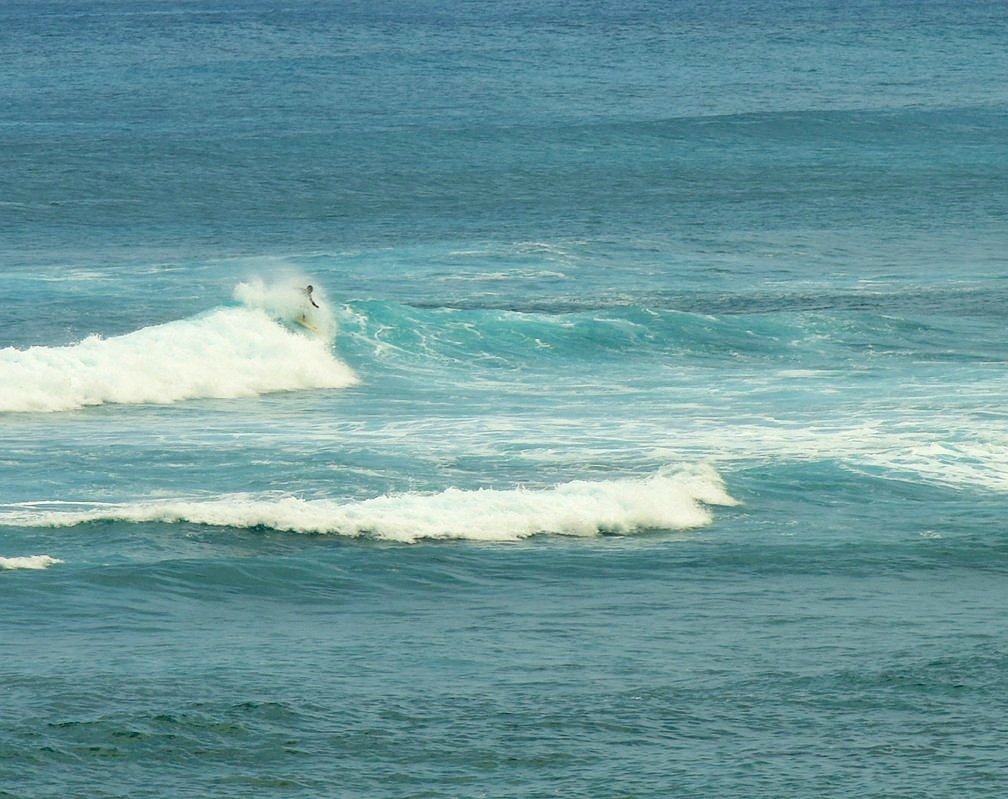
Ka’ena Point is the westernmost tip of Oahu and, despite being a torrential convergence zone where South and North Pacific swell energy collides with spectacular force, the waves can get good on a big winter swell -- for experts only, that is. On these big N or NW swells, Ka’ena Point stacks giant righthanders around the west side of the island and careens them down along the southern edge of the headland. Down the point on the west side is Yokohama Bay where the waves are tamer.
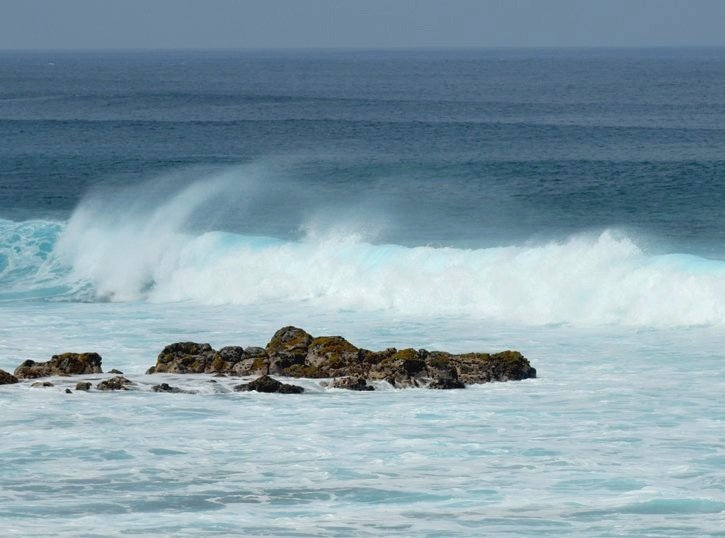
The coast at Ka’ena Point is fringed with black lava rocks and cliffs. Whales frequent this shoreline during the winter months.

The trail to Ka‘ena Point follows an old railroad bed and former dirt road that ran along the westernmost point of O‘ahu. The trail leads to Ka‘ena Point Natural Area Reserve, a remote and scenic protected area harboring some of the last vestiges of coastal sand dune habitat on the island, and home to native plants and seabirds, e.g., the Laysan Albatross.
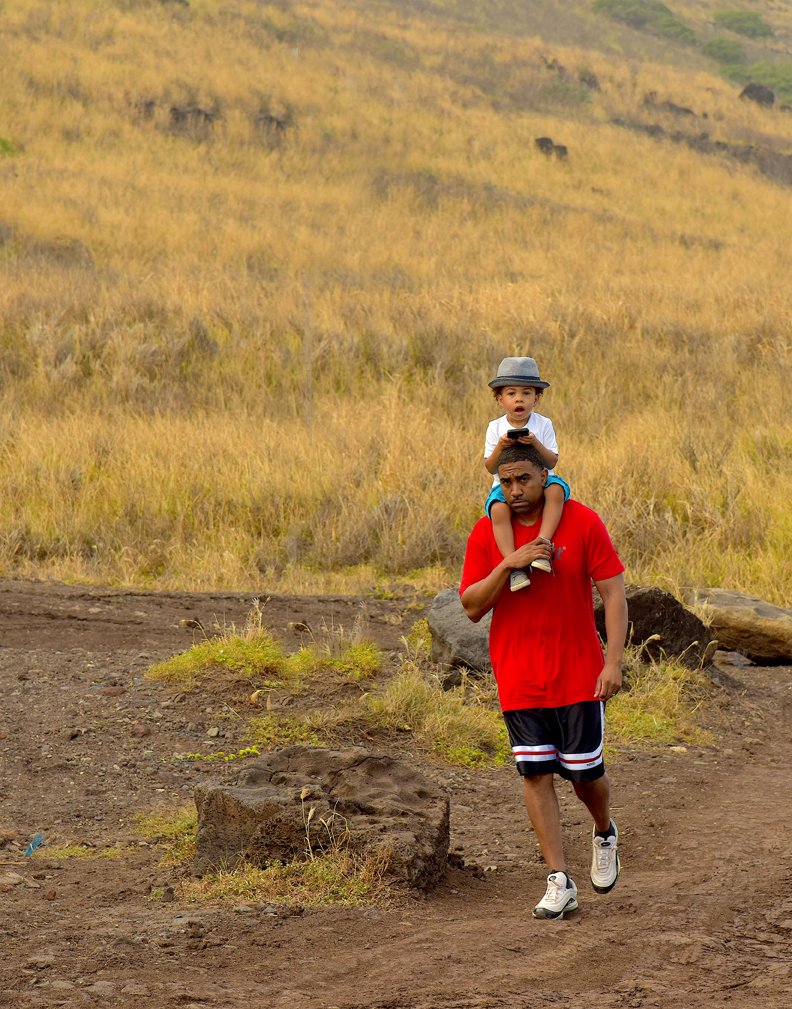
A wonderful way to spend a day with dad. The Ka’ena Point website warns: The weather is usually sunny and hot, and it can be windy – a hat, sunscreen, and plenty of water are recommended. Allow 1 to 3 hours depending on your pace. Stay away from the wave-exposed coast unless you are familiar with hazardous ocean conditions.
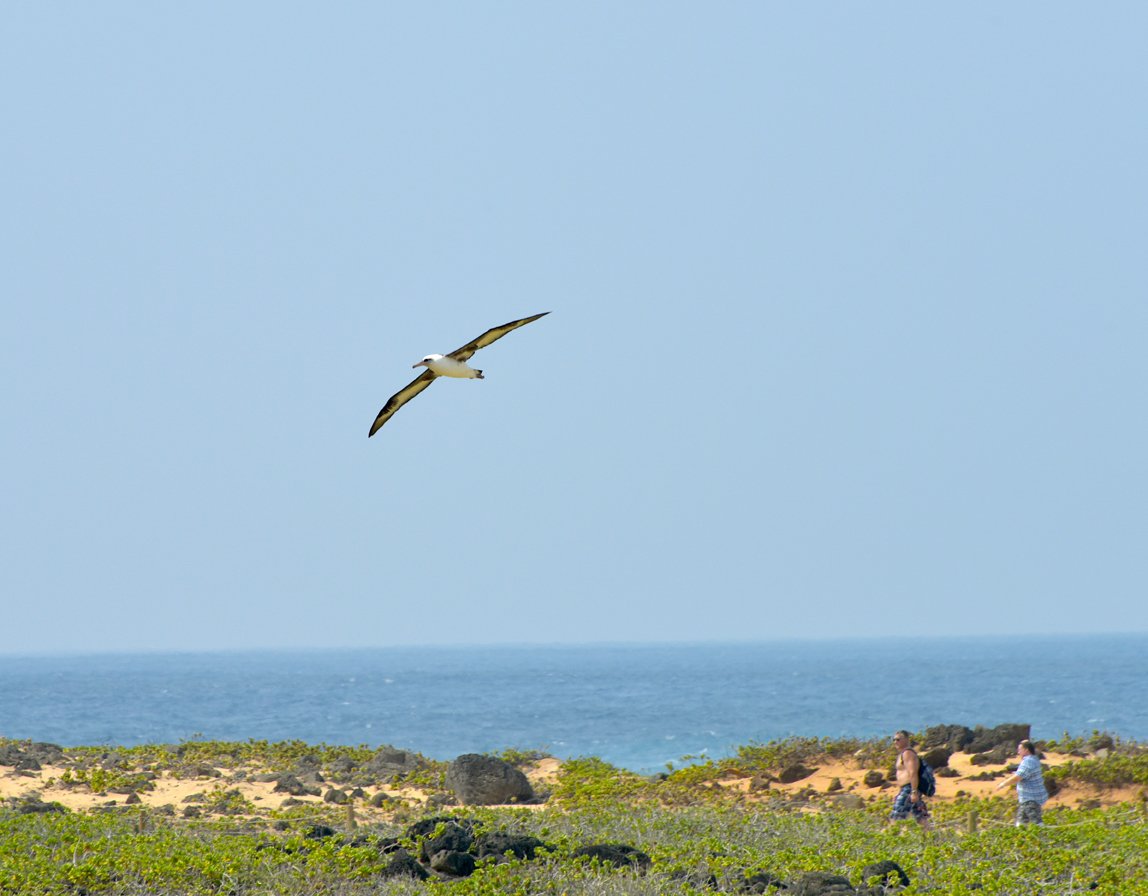
Laysan albatross are very large birds, their wingspan can reach to 13 feet and they may weigh as much as 25 pounds. Its range extends to most of the north Pacific Ocean. You can find over 400 mōlī spending the nesting season at Ka’ena Point. Initially, the birds can be seen circling the nesting area.
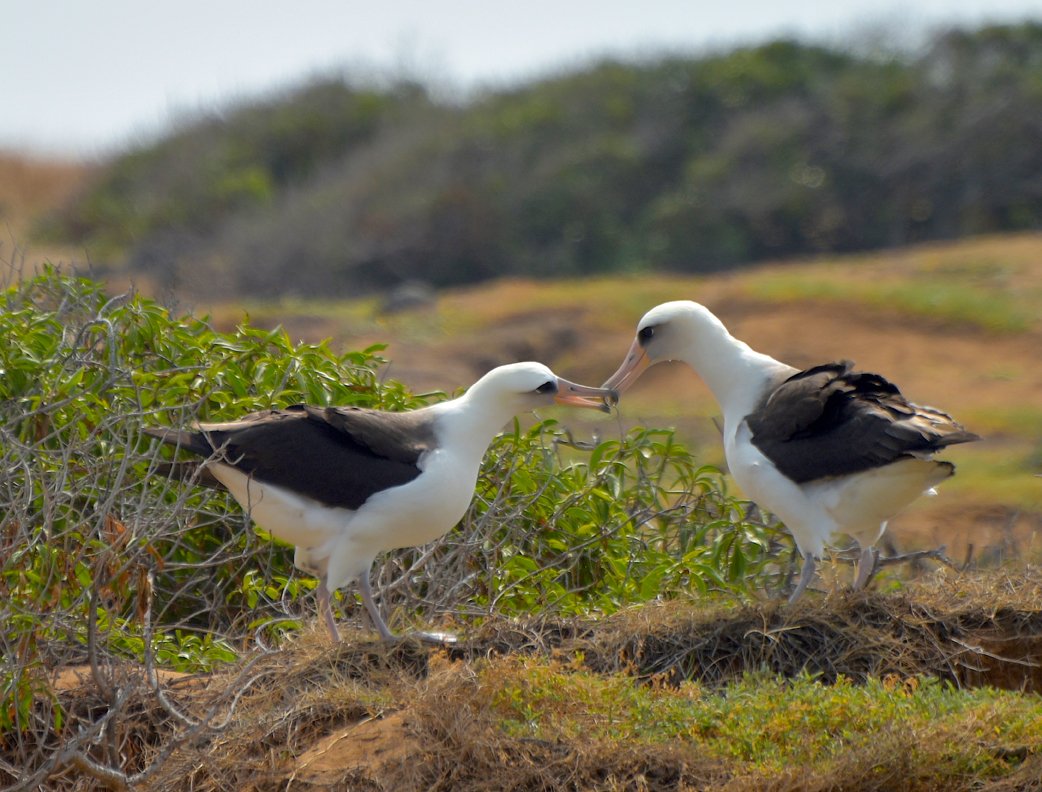
The albatross have elaborate courtship dances, and once mated they tend to remain faithful to their mate. In adulthood they rendezvous each year with their partner at the same nest site. Nesting time is the only time they spend on land and each year the pair stays just long enough to hatch and raise a single chick.
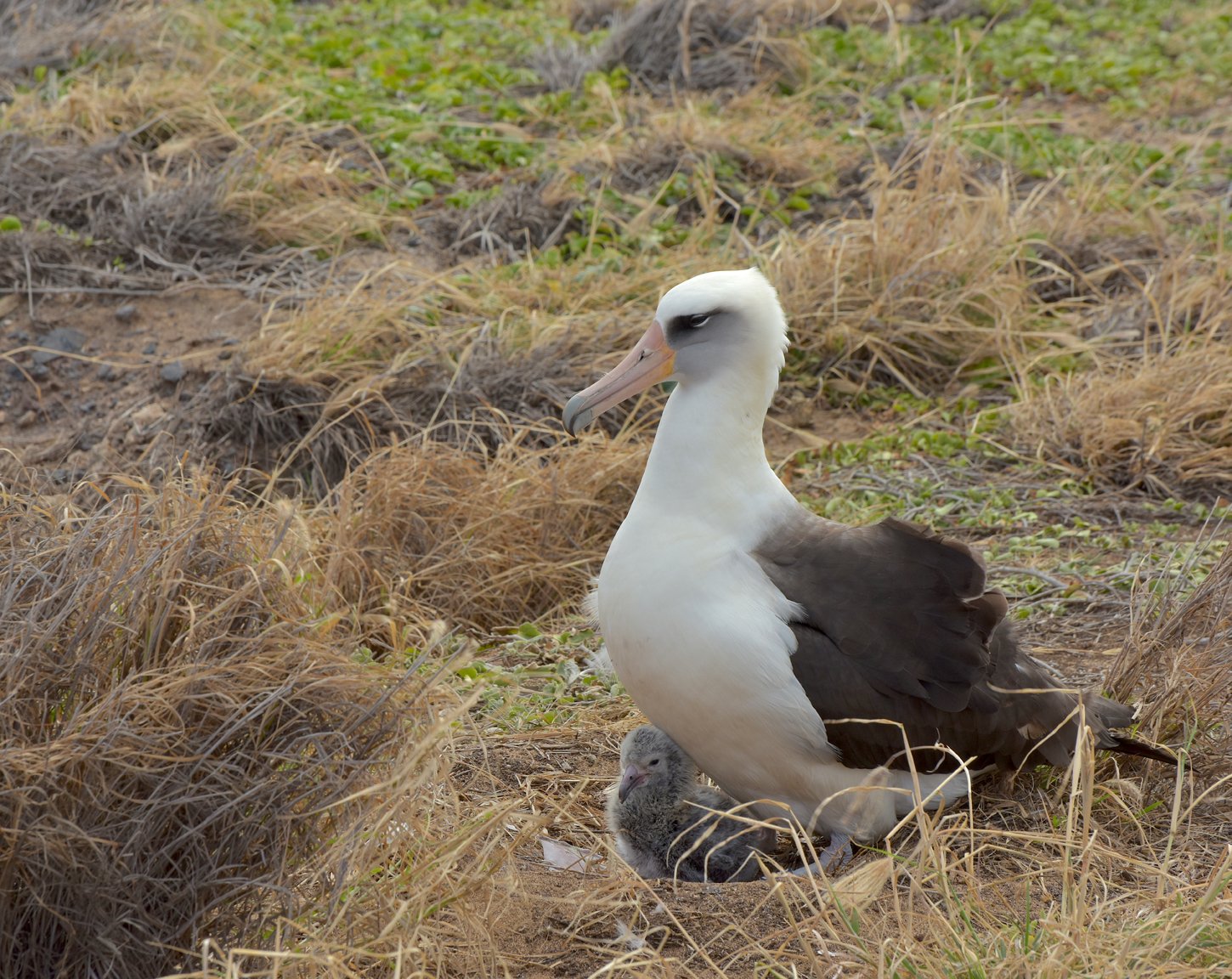
Albatross begin breeding and nesting in October, and leave in late spring. That is the only time the Laysan Albatross will be found on land, nesting and raising their young at Ka’ena Point Natural Area Reserve on O’ahu. The Laysan Albatross, mōlī, gets its name from its Laysan breeding colony in the Northwestern Hawaiian Islands.
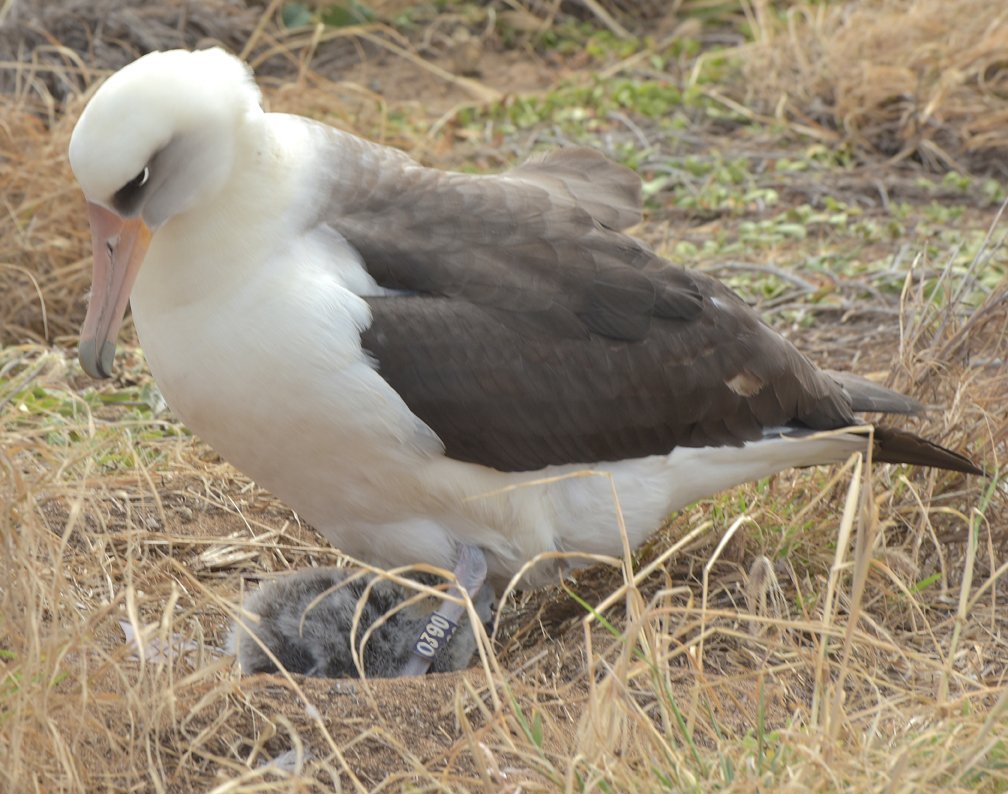
Walking on the path, although some of the albatross nests are only a couple of feet away, they albatross do not respond, as this is a safe place. Nearly all of the 400 or so Laysan albatrosses that spend the nesting season at Ka’ena have been fitted with leg rings (note the #0390 leg ring on this bird) and have had their DNA take; many have been given GPS tracking devices.
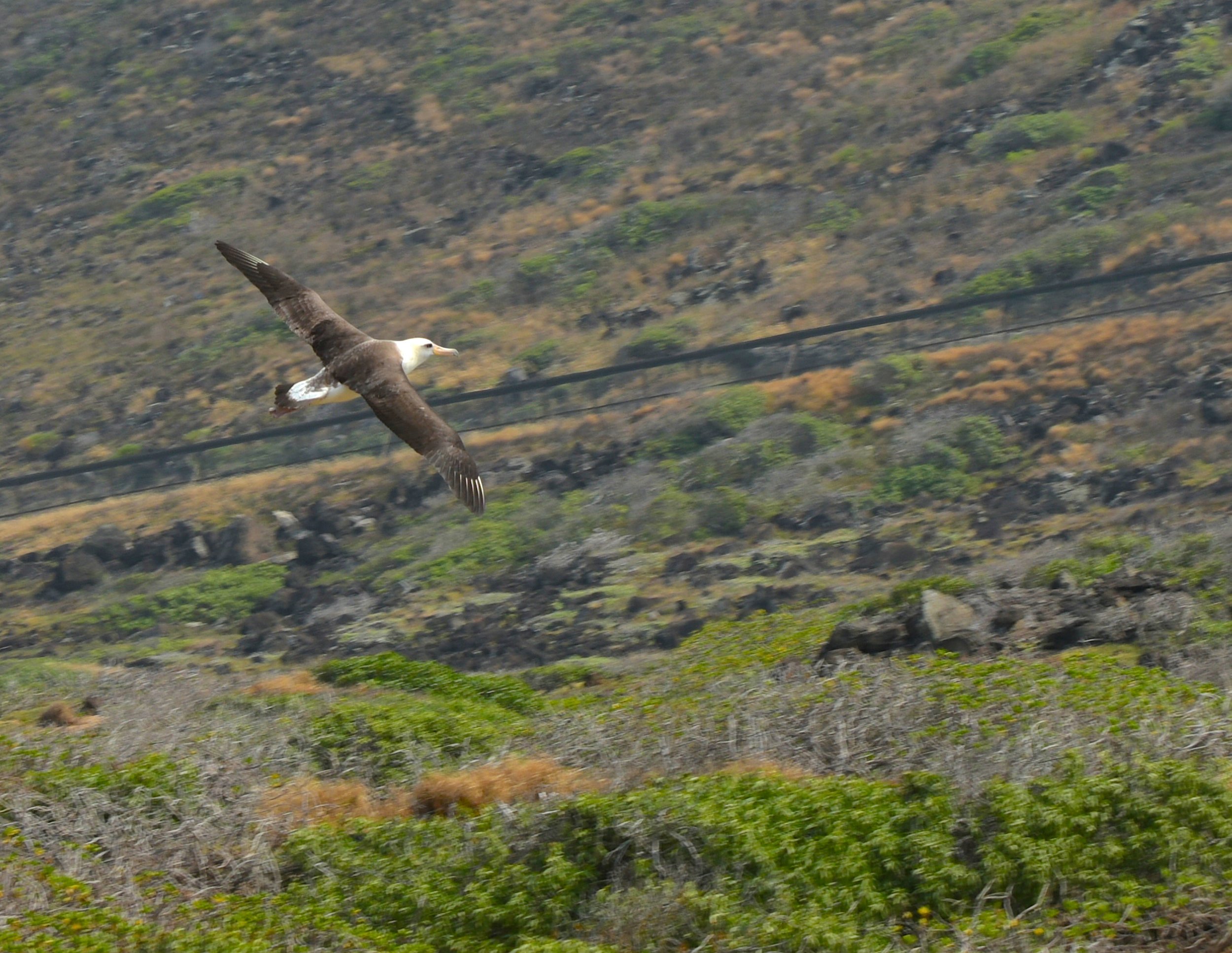
These albatross are white with a black tail and upper wings, dark patterns under the wings, and a black patch around the eye and pink bills, legs and feet.

This preening albatross is one of my favorite pictures. They live from forty to sixty years.
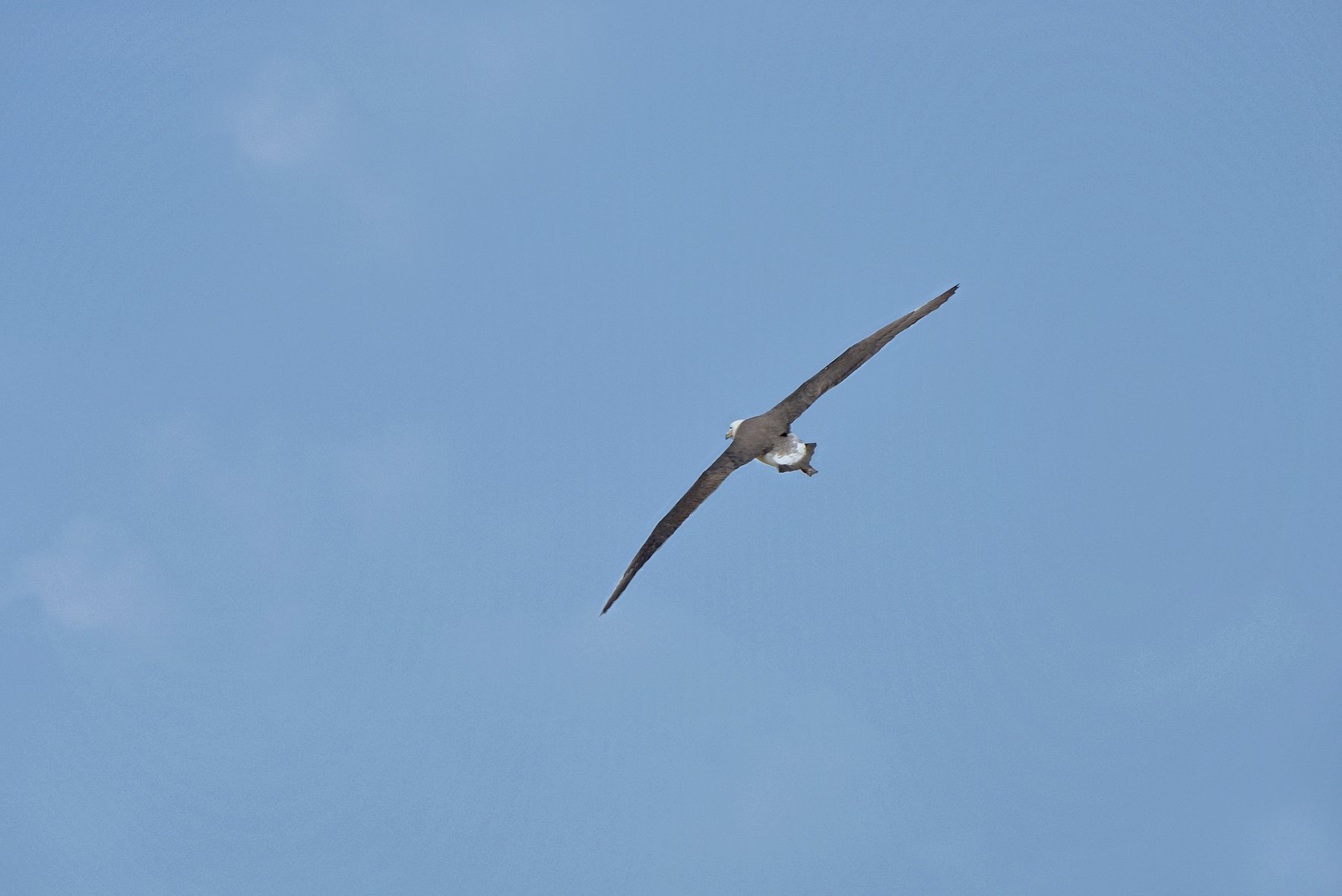
What was especially rewarding was watching the albatross glide above. An albatross in flight can be so perfectly attuned to wind conditions that it may not flap its wings for hours, or even for days, as it can sleep while flying. It takes advantage of the air currents just above the ocean’s waves to soar in perpetual graceful motion. They can stay out at sea for as long as five years before returning to the same island on which they were born.
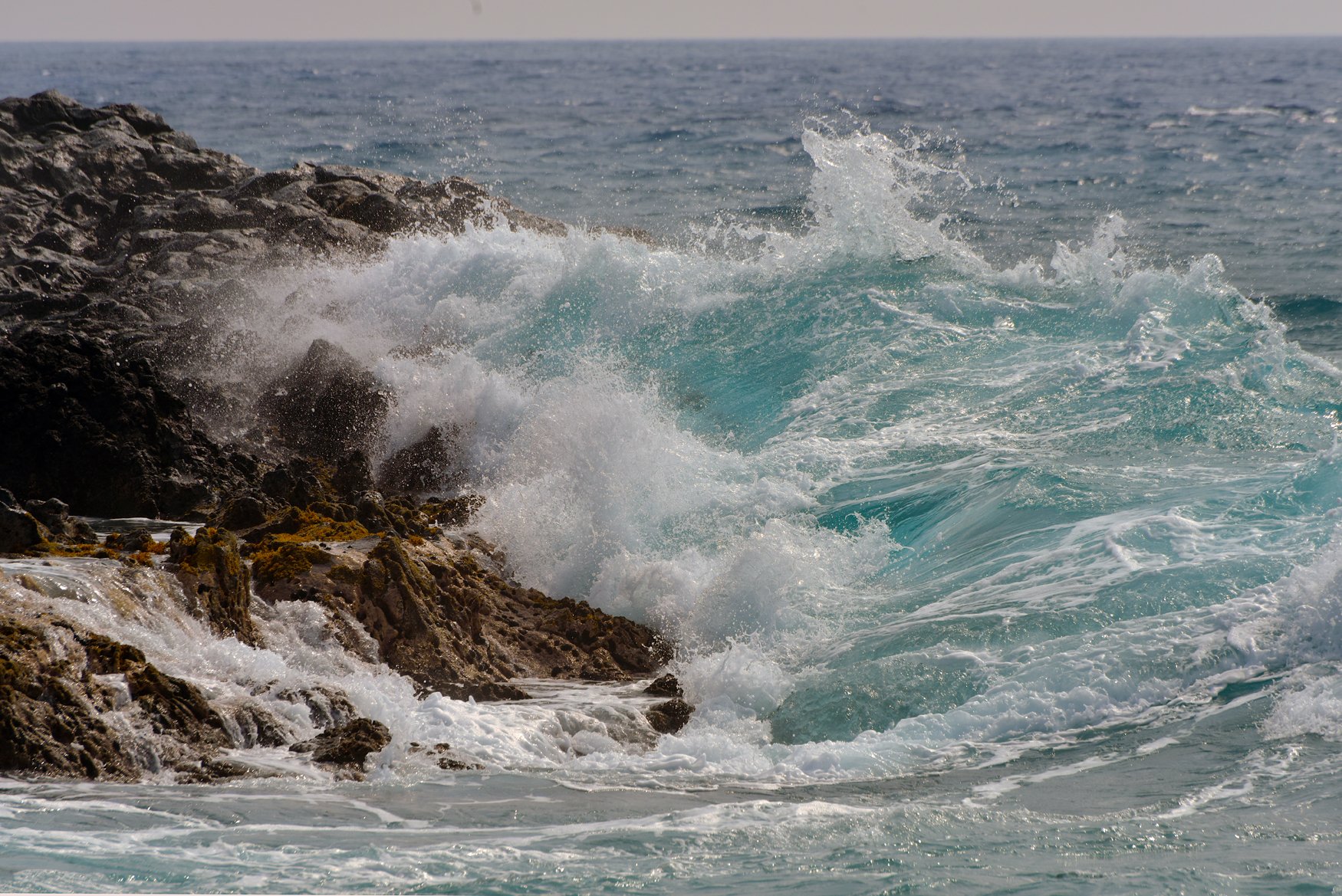
In the Mokuleʻia Section of the Ke’ana Point State Park, there are several sandy or rocky coves, tide pools, sand dunes,
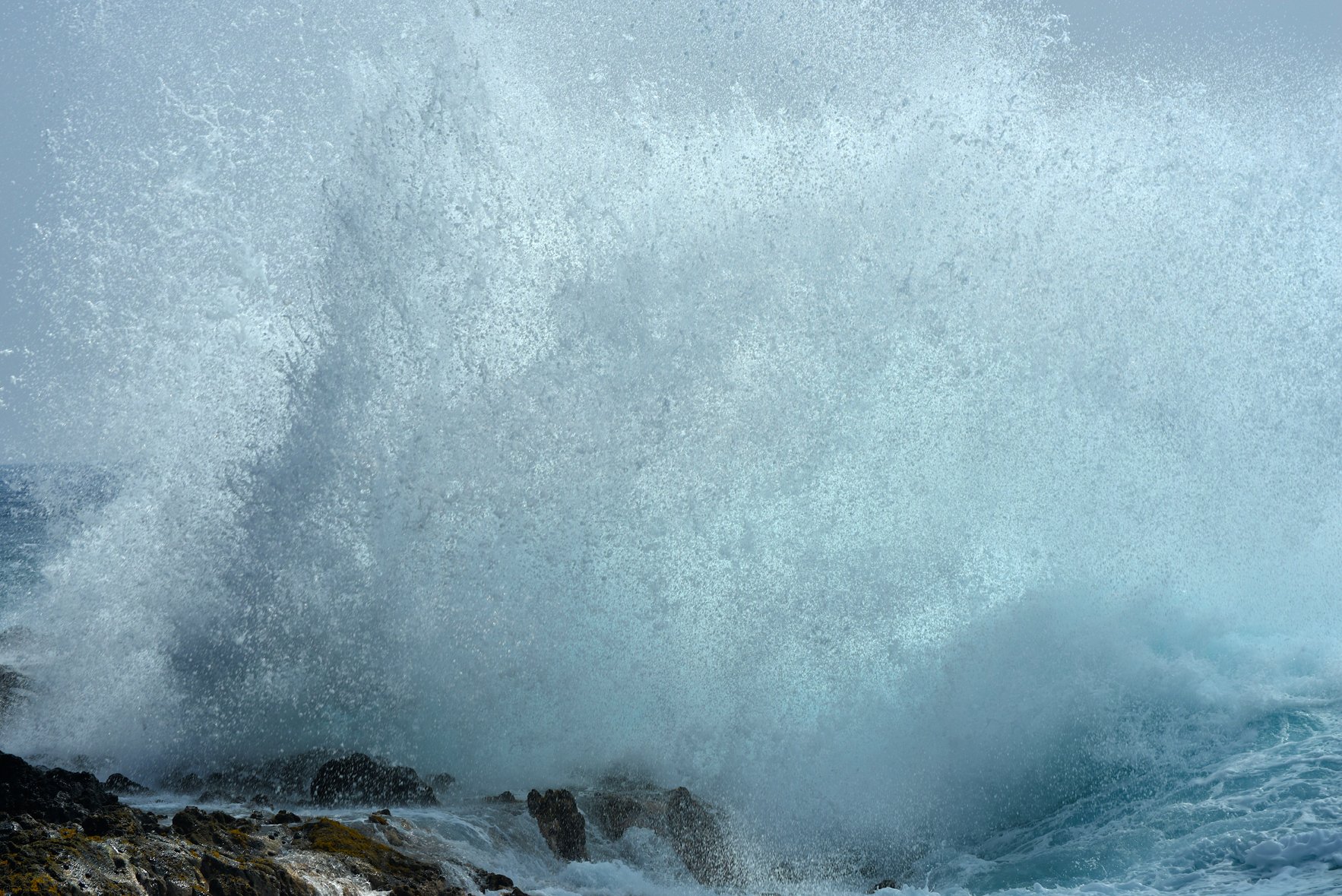
Winter surf conditions at Ka’ena Point are characterized by big swells, strong winds, and clean blue water. The average swell height in winter is 12 ft, with peaks reaching 27 ft. Big swells can occur when a frontal system brings wind and rain for a day or two.
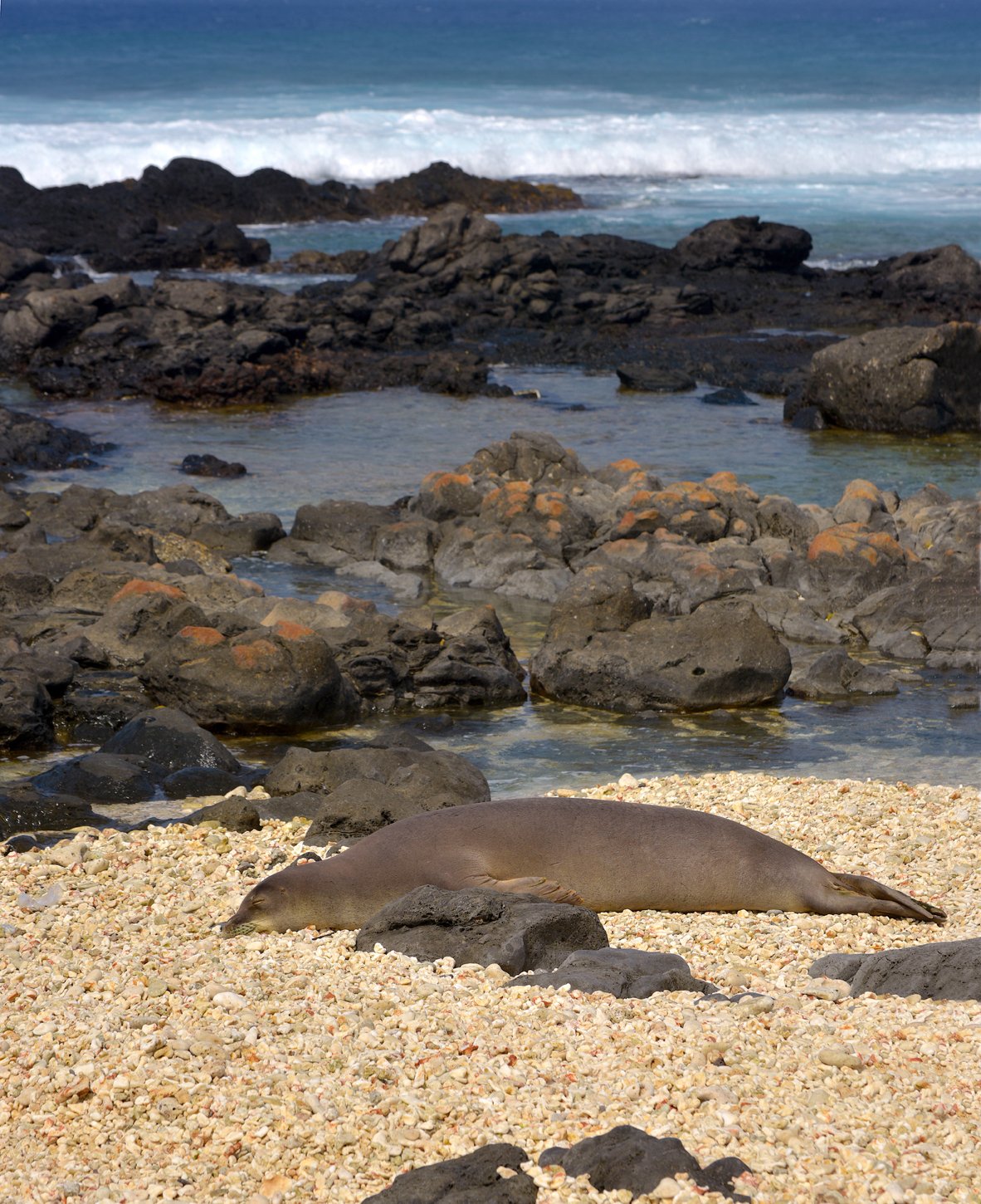
Brought back from the brink of extinction by the protected breeding grounds in the far Northwestern Hawaiian Islands, monk seal populations have risen high enough that some have been visiting even the crowded shores of O‘ahu. However, this seal is enjoying a quiet rest on one of the less traveled shores at Ka’ena point.
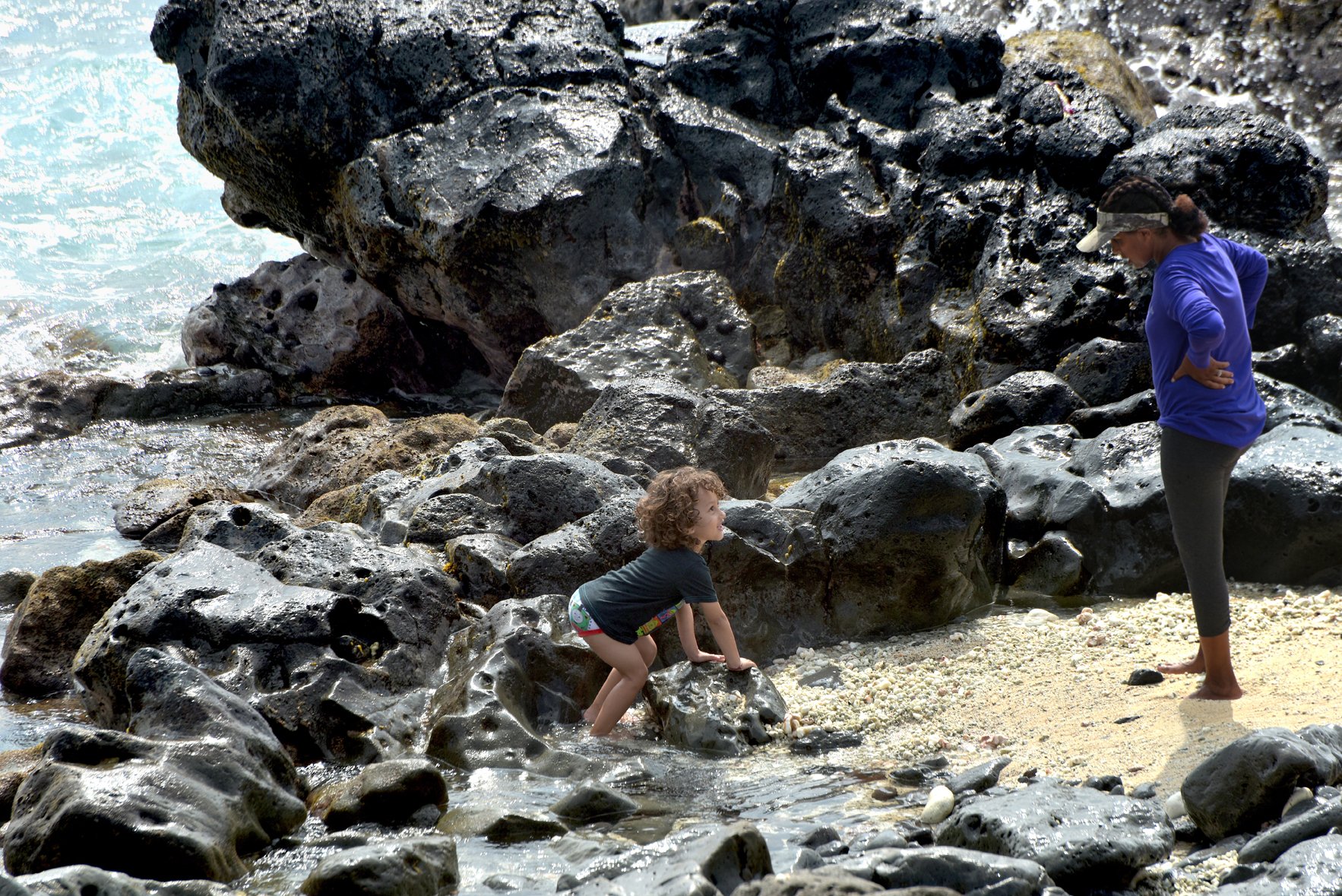
Mom and son enjoying the tide pool area on the side to the left of the sleeping seal.
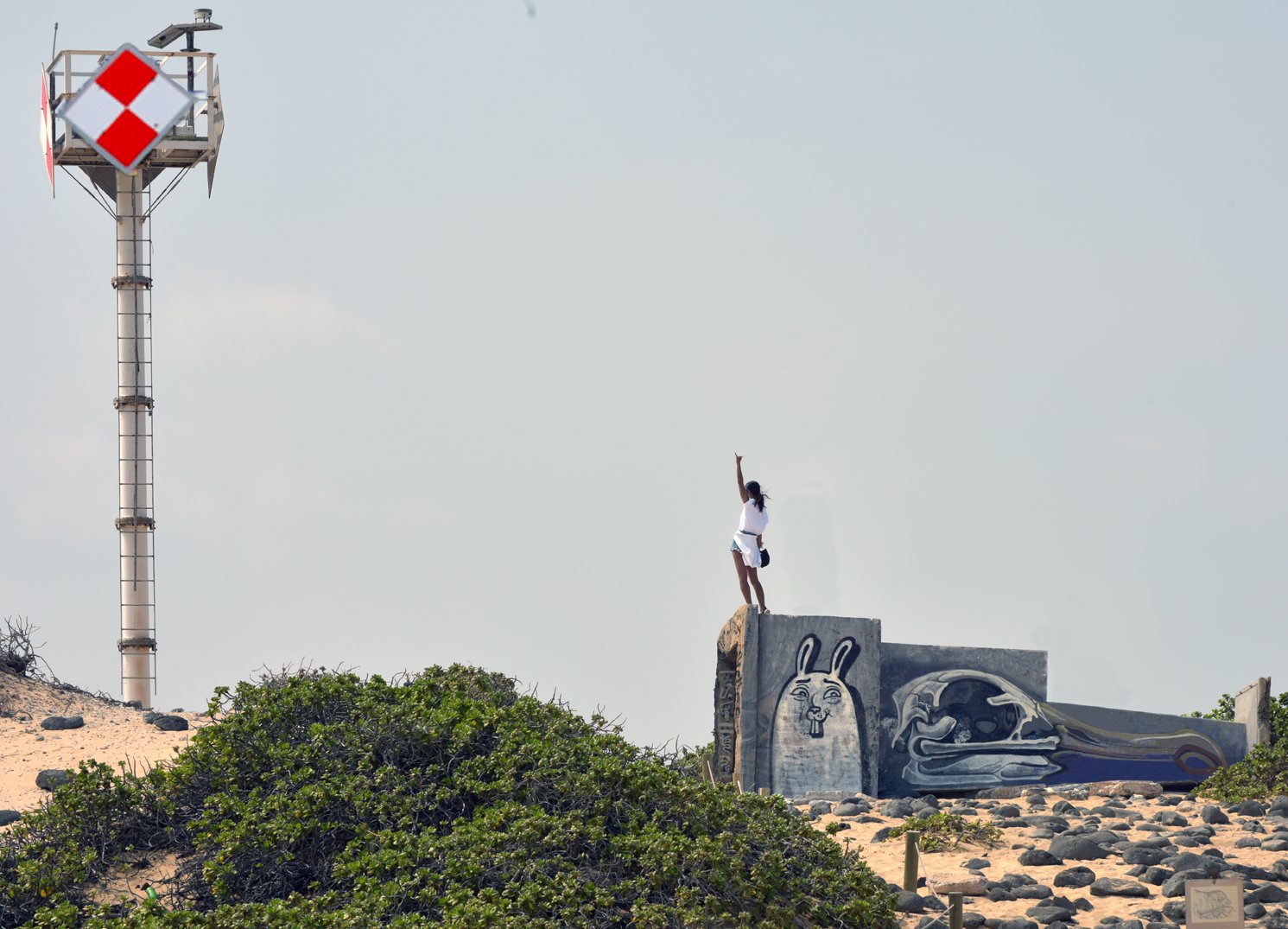
A Japanese tourist stands on the bunker celebrating having arrived at the edge of the Point where there is a a navigational light (left).
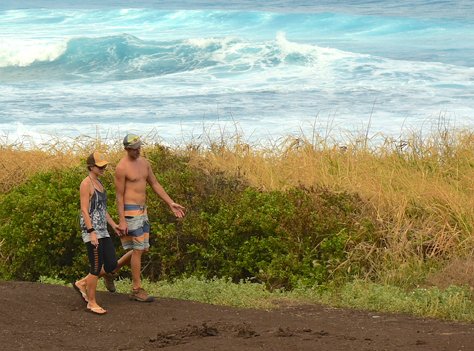
Couple returning from reserve Point.
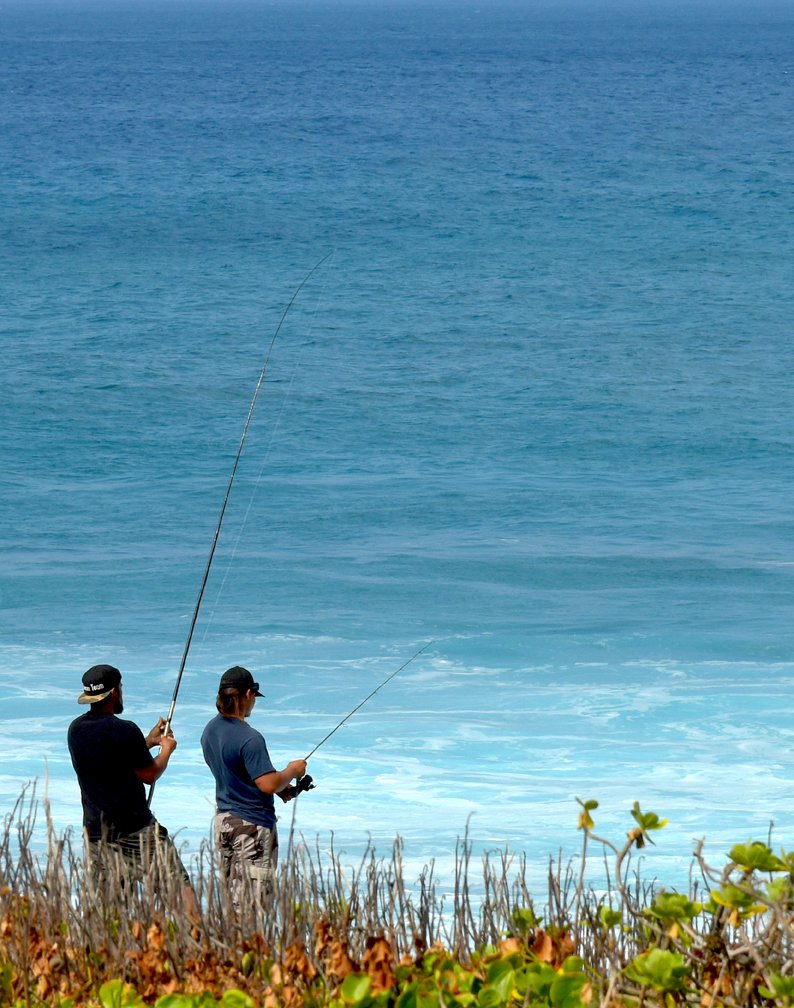
Besides the surfing and the habitat reserve, Ka’ena point is a local fishing spot.
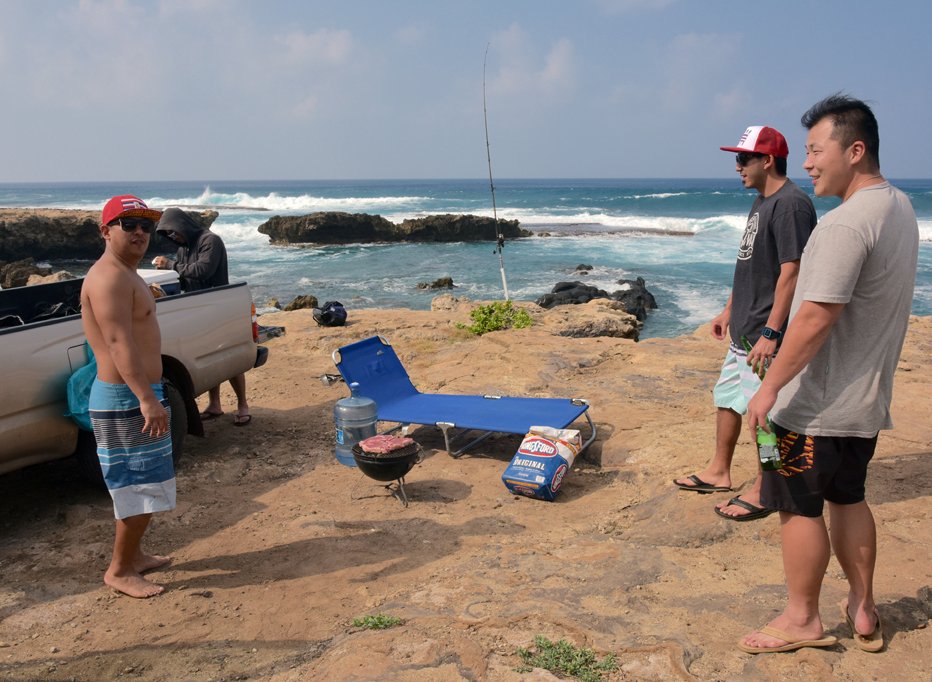
I noticed this group of young men with their fishing gear, cooking steaks, not fish. When I asked, “Where’s the fish?”, they pointed to the grill and told me it was “cowfish.”
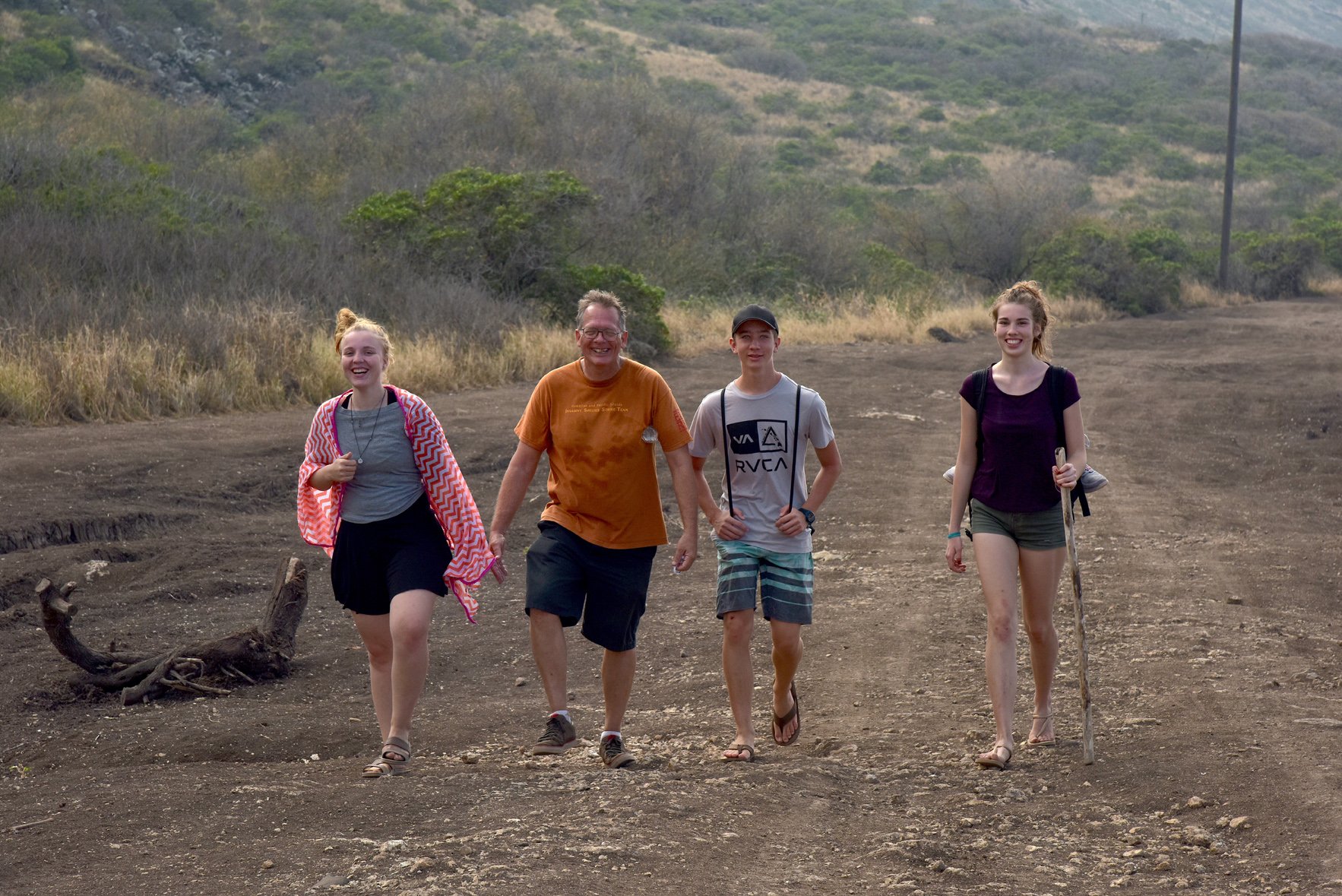
I met these three German teenagers who were attending school in Waianae and their sponsor (who lived in Manoa) at the Reserve Point where the monk seal was sleeping. They hadn’t noticed the seal so I pointed it out to them. When they thanked me I noticed the German accent and thus engaged them in conversation about their experience of Hawai’i and the program they were attending. On the way out of the Park I turned and saw them behind me, took this picture, and shared it with them. They reminded me of the good times I had in Germany back in the early 70s.
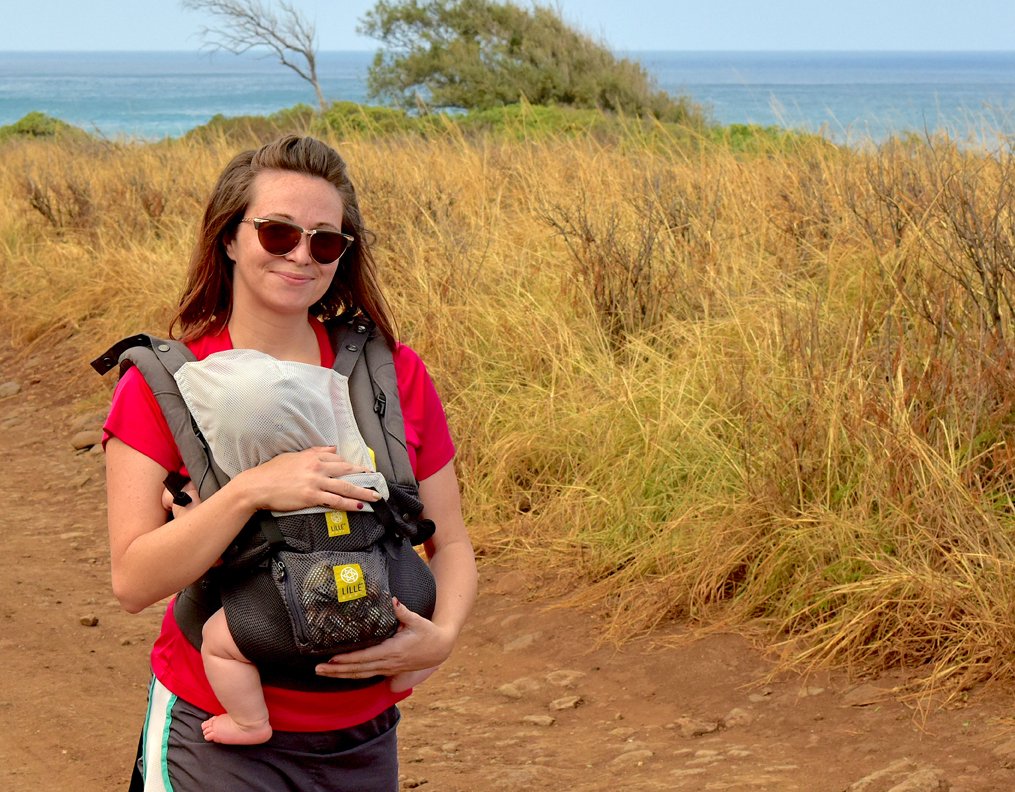
The similarities between species - parents protecting their children. Humans experience love and joy in many different ways and for many different reasons. I wonder, not if, but how different animals, e.g., the albatross, experience the love and joy of parenting, as well as the anxiety and fear of protecting. Are they aware with forethought, as we are, that when children are out of sight, a parent cannot protect their offspring from the dangers of the world, or do they operate on instinct so that if there is no immediate danger then there is no anxiety?. “Wouldn’t it be loverly.”
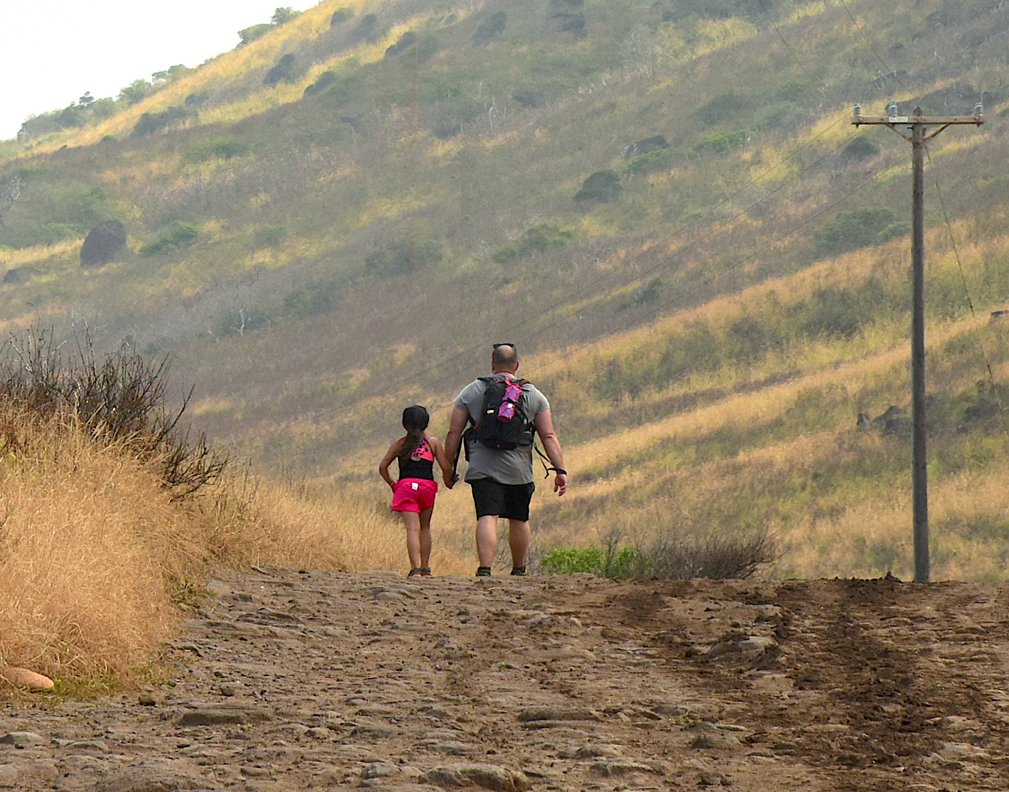
This father-daughter walking hand-in-hand reminded me of walking with my daughters when they were young. The feel of a little hand in mine was always a special event. For the albatross family unit on Oahu, male Laysan albatrosses play an equal role in caring for their young during nesting, sharing the responsibility of incubating the egg and feeding the chick with their female partner, although typically the male takes the first incubation shift while the female recovers at sea after laying the egg; both parents contribute equally to raising the chick once it hatches.